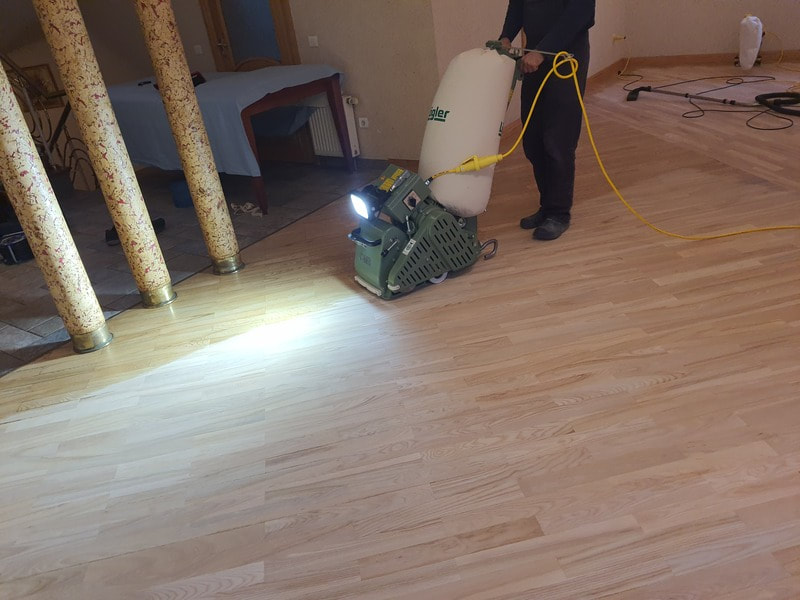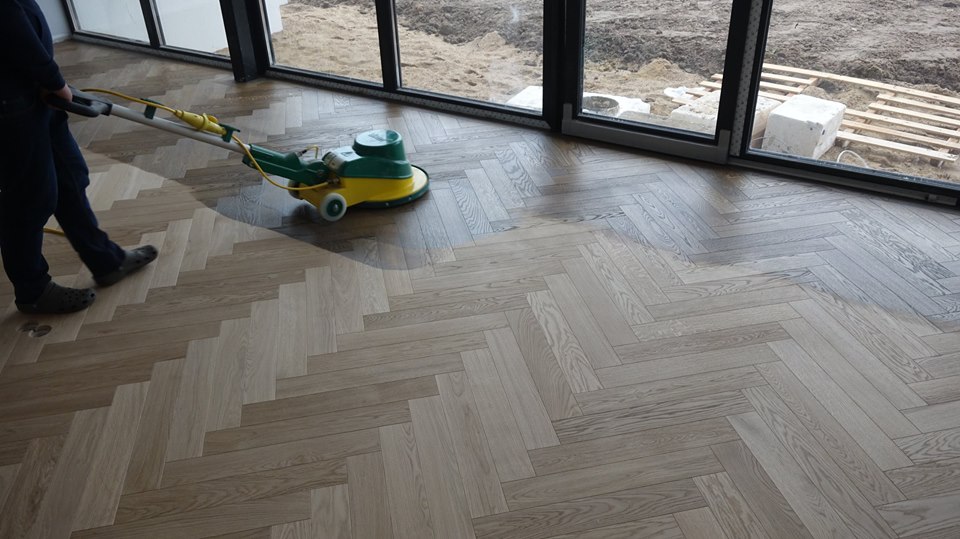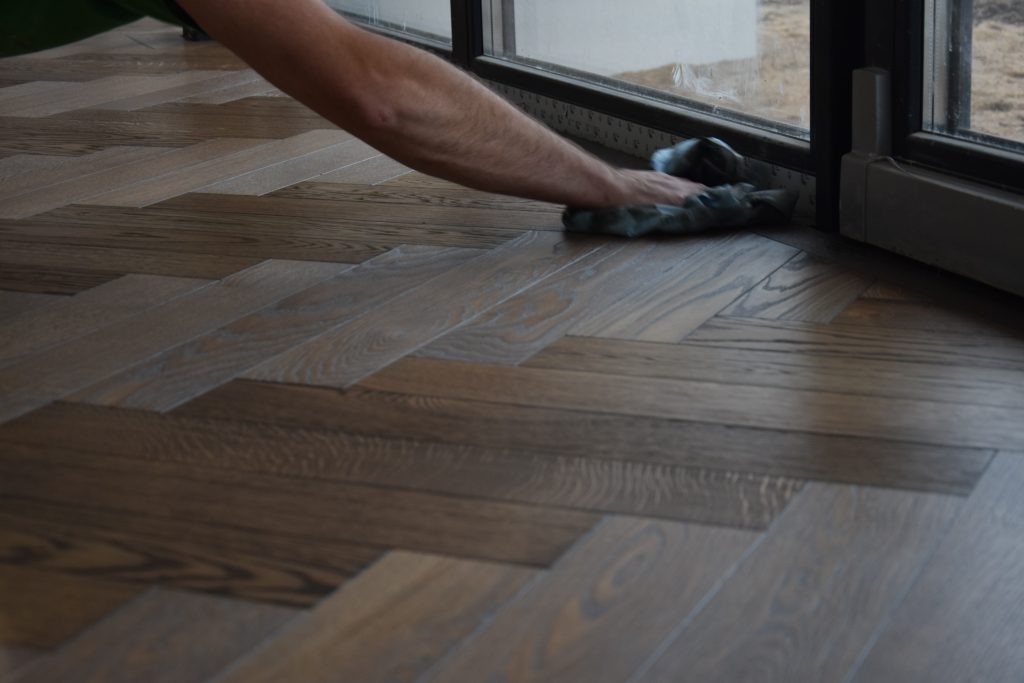|
Hardwood floors are a timeless and elegant addition to any home or commercial space. Over time, though, even the most well-maintained hardwood floors may start to show signs of wear and tear. This is where the process of refinishing comes into play, offering a cost-effective and transformative solution. In this article, we will delve into the process of refinishing hardwood floors, explore different types of finishing materials, and discuss the best options for both residential and commercial projects. Assessment and Preparation: Before diving into the refinishing process, it's crucial to assess the condition of the hardwood floor. A thorough inspection helps identify any damage, scratches, or unevenness that needs to be addressed. The preparation stage involves removing furniture, rugs, and other obstacles from the area to ensure a smooth and uninterrupted refinishing process. Sanding: Sanding is a crucial step in refinishing hardwood floors. It involves removing the existing finish, scratches, and imperfections from the surface of the wood. A floor sander equipped with different grits of sandpaper is used to gradually smooth the floor and create a uniform surface. The process typically begins with a coarse grit to remove the old finish and deeper scratches, followed by finer grits to achieve a smooth, polished result. Filling and Repairing: After sanding, any gaps, cracks, or holes in the wood should be filled to create a seamless appearance. Wood filler or putty, matched to the color of the floor, is used to fill these imperfections. This step ensures a level surface and enhances the overall aesthetic appeal of the finished floor. Staining (Optional): Staining hardwood floors allows you to change or enhance their color. It's an optional step, as some homeowners prefer the natural beauty of the wood grain without any added color. Stains come in various shades and can be applied evenly to achieve the desired look. It's important to note that different wood species absorb stains differently, so testing in an inconspicuous area is recommended before applying it to the entire floor. Finishing Materials:
There are various types of finishes available for hardwood floors. Here are the most common ones: a. Polyurethane: Polyurethane finishes are popular for their durability and water resistance. They come in two varieties: oil-based and water-based. Oil-based polyurethane provides a warm, amber tone and requires more drying time. Water-based polyurethane dries quickly and has a clear finish, making it an excellent choice for lighter wood species. b. Oil-based Finish: Oil-based finishes penetrate the wood, enhancing its natural appearance while providing moderate durability. These finishes often require periodic maintenance, such as reapplication of oil or wax, to retain their luster. c. Water-based Finish: Water-based finishes offer excellent durability and are relatively odorless during application. They provide a clear finish, making them suitable for light-colored woods. d. Wax: Wax finishes offer a classic, low-luster look. While they require more maintenance than other finishes, wax provides a rich, warm appearance and can be easily buffed to restore its shine. Residential vs. Commercial Projects: When choosing a finish for your hardwood floor, it's essential to consider the project's nature and the expected foot traffic. For residential projects, polyurethane finishes (both oil-based and water-based) are generally recommended due to their durability and resistance to everyday wear. They offer excellent protection against spills, stains, and scratches, making them ideal for households with pets and children. In commercial projects with high foot traffic areas, a more robust and durable finish is required. In such cases, a commercial-grade water-based polyurethane finish is often preferred. These finishes are designed to withstand heavy use and are more resistant to scratches, chemicals, and moisture. Conclusion: Refinishing wood floors breathes new life into worn-out surfaces, restoring their natural beauty and extending their lifespan. From sanding to filling, staining (if desired), and applying the appropriate finish, each step plays a vital role in achieving a stunning end result. Whether it's a residential or commercial project, selecting the right finish is crucial to ensure long-lasting durability. By following the process outlined in this article and considering the specific needs of your space, you can achieve beautifully refinished hardwood floors that will be cherished for years to come. Contact us today for wood flooring sanding, repair and refinishing quotes.
0 Comments
Your comment will be posted after it is approved.
Leave a Reply. |
|
- Home
-
Products
- Engineered Wood Flooring >
- Solid Wood Flooring
- Chevron Parquet
- Herringbone Parquet
- Wide Plank Wood Flooring
- Live Edge Wood Flooring
- Ash Wood Flooring
- Douglas Fir Wood Flooring
- Walnut Wood Flooring
- Versailles Parquet
- Design Parquet Panels
- Mansion Weave Parquet
- Reclaimed Oak Wood Flooring
- Wood Cladding
- Charred Wood
- Wood For Stairs
- Unfinished Wood Flooring >
- Acoustic Wall Panels
- Architectural Details
- Bespoke Wood Flooring
- Services
- Information
- BLOG
- Gallery
- Contact
- Trade Program
About Hoff ParquetHOFF PARQUET - hardwood flooring supplier based in Edinburgh. We are your go-to company for the best real wooden floors like Chevron Parquet and Herringbone Parquet, Engineered and Solid Wood Flooring for any residential or commercial project. Our dream is to create unique luxury hardwood elements including flooring, wood for wall cladding, wood for stairs and bespoke parquetry.
Hoff Parquet - think GREEN. We were inspired to create a greener and more environmentally friendly company and product inventory. Only the highest quality eco friendly materials used for our wood flooring products and during the installation process. Our custom-made flooring made by experienced craftsmen offers premium quality, trendy shapes and colours. In collaboration with interior designers and architects we create the flooring which becomes a truly unique interior detail. We hereby confirm that all our wood flooring products are made in the European Union. Furthermore, all our wood materials are backed with FSC (Forest Stewardship Council) and PEFC (Programme for the Endorsement of Forest Certification Schemes) manufacturers' certificates, ensuring that our products meet the highest standards of sustainability and environmental responsibility. We are always open for innovations, new contacts and we are constantly in search for new partners! |
|
© COPYRIGHT 2024 ALL RIGHTS RESERVED.



